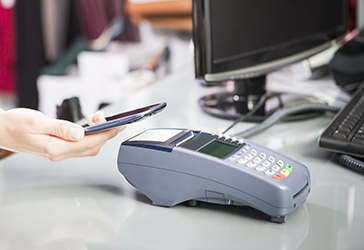
Mobile phones are everywhere now and are no longer just for making calls and sending texts. People use their phones for everything from navigating a new city to watching TV, getting work done, and managing calendars. It is only natural that over the course of the last decade, many people have come to use their phones more often than they use their wallets when making a purchase. There are several major types of mobile payments, each with a different method of making the payment and different overall purpose or use.
Simply speaking, online mobile payments are when you use your mobile device to make a payment via an app or website. You might use your credit card or bank account information as the actual payment method, which you need to enter in the app or website if you have not previously saved it there.
Direct carrier billing is another type of mobile payment, but rather than using a credit card or bank account; the charges are added to your phone bill. Buying apps and making in-app purchases tend to be the most common types of direct carrier billing. Depending on your mobile phone carrier, you may also be able to purchase digital content, like TV shows or movies, through direct carrier billing.
SMS payments allow you to send money to someone by entering their phone number in a payment app. The recipient gets a text notification to their phone and, if they have not previously done so, must designate an account to receive the money. It could get deposited into a bank account, PayPal account, or another type of digital account.
Mobile point of sale payments allows vendors to accept payments from physical credit cards swiped through a reader attached to a mobile device. The touch screen of the device itself displays the details for the buyer to confirm the purchase. This method is often used by small businesses that do not want to use a stationary point of sale console at a store, but instead receive payments at different locations and want the flexibility of accepting credit card payments from anywhere. Square, PayPal Here, LevelUp, and Shopkeep are some of the biggest mobile point-of-sale providers.
Mobile wallet payments using NFC (near field communication) are arguably the most exciting type of mobile payments. They allow users to make purchases in stores using their phones, rather than needing to use cash or a credit card. Payments are typically made through the terminal that processes credit and debit card payments, but rather than swiping a card, you only need to bring your phone in close proximity to the terminal and confirm on your phone that you want to make the payment. Choose from several mobile wallet options, depending on the type of device you have.
- Apple Pay: This was the first NFC payment system to make a big splash, and it works on iPhone 6 and later and the Apple Watch. Payments are verified using your fingerprint.
- Samsung Pay: This has the most widespread functionality because it works not only at payment terminals with NFC technology, but also any terminal with a magnetic stripe reader. It works on many of the Samsung Galaxy devices and is authorized with your fingerprint.
- Android Pay: This system works on any Android phone with NFC technology when used at an NFC-equipped payment terminal. It has the advantage of being verified with a PIN rather than requiring a fingerprint, making it ideal for older phones without fingerprint technology.





